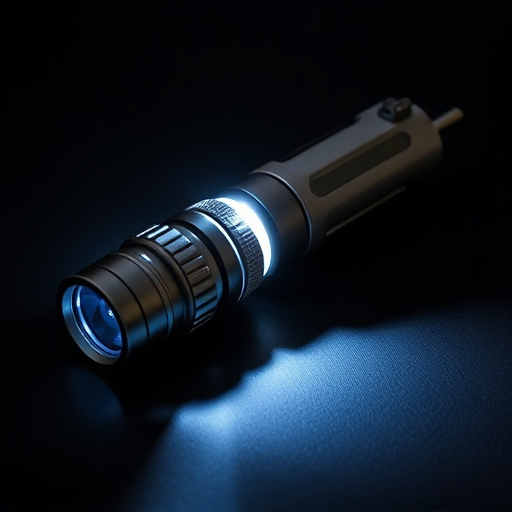Pen stun guns operate by delivering high-intensity electrical pulses through metal prongs, temporarily paralyzing muscles and causing severe pain to disable an attacker. Using rechargeable lithium-ion batteries, these compact tools feature ergonomic designs with firm grips for accurate targeting and advanced safety features like mechanical triggers. Precise current management is crucial to prevent health issues from excessive or prolonged shocks, with smart circuitry and adjustable voltage settings ensuring effective yet safe shock delivery.
Electrical current is the lifeblood of a pen stun gun, enabling its non-lethal self-defense capabilities. Understanding how this flow of electrons works is crucial to appreciating the functionality and design of these compact weapons. This article delves into the science behind pen stun guns, exploring the components that facilitate current flow and the safety measures in place to control it. By dissecting these aspects, we provide insights into what makes these devices an effective deterrent.
- Understanding Electrical Current: The Basis of Pen Stun Gun Functionality
- Components and Design: How Pen Stun Guns Facilitate Current Flow
- Safety Considerations: Managing and Controlling Electrical Current in Stun Devices
Understanding Electrical Current: The Basis of Pen Stun Gun Functionality
Electrical current is the lifeblood of a pen stun gun, enabling its powerful function as a non-lethal self-defense tool. When activated, a small high-voltage battery powers an electrical circuit that rapidly sends intense pulses of current through metal prongs or contacts on the device’s tip. This sudden surge of electricity disrupts the body’s nervous system, temporarily paralyzing muscles and causing extreme pain, allowing the user to disable an attacker.
The specific mechanics behind a pen stun gun’s operation involve controlling the flow of electrical energy. The device uses carefully calibrated resistors and capacitors to shape the current’s waveform and intensity, ensuring it delivers enough force to subdue without causing serious harm. Understanding this fundamental principle of electrical current is key to appreciating how these innovative self-defense tools operate effectively in high-stress situations.
Components and Design: How Pen Stun Guns Facilitate Current Flow
Pen stun guns, also known as personal stun devices, are designed to disrupt an assailant’s muscular control and cause temporary incapacitation through electric current flow. Their compact and discreet nature belies a sophisticated electrical system. Key components include a high-voltage, low-ampere power source, typically one or more rechargeable lithium-ion batteries, and a metal probe or tip that serves as the second conductor for electricity to complete the circuit.
The design of pen stun guns emphasizes efficient current flow. Their ergonomic shape allows for a firm grip during use, ensuring accurate targeting and minimizing accidental discharge. Additionally, many models incorporate advanced safety features like mechanical triggers and smart circuits to control current output, preventing excessive energy delivery that could cause harm to the user or bystanders. This meticulous consideration in components and design makes pen stun guns effective personal defense tools for individuals seeking protection without drawing attention.
Safety Considerations: Managing and Controlling Electrical Current in Stun Devices
When considering the electrical current flow in stun devices, safety is paramount, especially with popular items like pen stun guns. These compact self-defense tools deliver a powerful electric shock, but their design also demands careful consideration of current management and control. The primary goal is to ensure the device’s effectiveness while minimizing potential risks to users and bystanders.
Stun devices operate by passing an electric current through the body of the target, temporarily disrupting muscle control and causing neuromuscular paralysis. Proper current control mechanisms are essential to prevent excessive or prolonged shocks that could lead to serious health issues. Advanced stun gun models incorporate smart circuitry and safety features, such as adjustable voltage settings and built-in safety switches, to manage current flow precisely. These measures help users deliver the intended shock while mitigating the chances of accidental injuries or misuse.
Pen stun guns, through their intricate design and understanding of electrical current flow, offer a powerful yet controlled method of self-defense. By facilitating precise current delivery, these devices ensure safety while providing effective immobilization. Proper safety considerations and component design are key to harnessing this technology, making pen stun guns a reliable option for personal protection.
